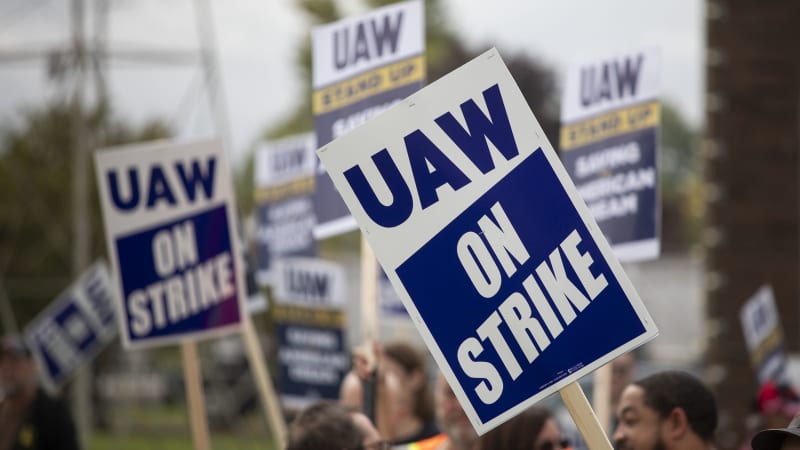UAW and Detroit 3 appear to make progress in contract talks

DETROIT — Meaningful progress has been made in negotiations between the striking United Auto Workers union and Detroit’s three auto companies, according to a person with direct knowledge of the talks.
The person said Wednesday that progress was reported at all three companies, with some offers being exchanged. Another said there was more movement in talks with Jeep maker Stellantis, with less at Ford and General Motors. Neither person wanted to be identified because they aren’t authorized to speak publicly about the bargaining.
Union President Shawn Fain will update members Friday on bargaining toward bringing to an end the nearly 3-week-old strikes against the companies.
It wasn’t clear exactly what Fain will announce as part of the union’s strategy of targeted strikes against the companies, with automakers perceived as making progress in the talks being spared additional job actions.
But the report of progress raises the possibility that the union may decide not to expand its walkouts at one or more of the companies. The union has so far limited the strike to about 25,000 workers at five vehicle assembly plants and 38 parts warehouses. Fain has announced strike expansions on each of the past two Fridays.
Ford said Tuesday that it increased its offer to the union on Monday night, but provisions made public by the company were close to previous offers. The company said its seventh offer raised the general wage increase to over 20% over four years without compounding. It also said the company raised its 401(k) retirement contributions and confirmed profit sharing was offered to temporary workers. Those workers also would see a pay raise from $16.67 per hour to $21.
Ford, which had made early progress, was spared from the second round of strikes, and its parts warehouses remain open. Stellantis was exempted last week, when the union added assembly plants at Ford in Chicago and GM in Lansing, Michigan.
So far the union has avoided strikes at large pickup truck and SUV factories, vehicles that are responsible for much of the automakers’ profits.
The union has about 146,000 members at all three companies combined. The targeted strike strategy helps to preserve the UAW’s strike fund, which was $825 million before the strikes began on Sept. 15. GM and Ford have laid off just over 3,500 UAW workers at plants not covered by the strikes. Those workers will get union strike pay of $500 per week.
The UAW contends the companies have made billions of dollars in profits during the past decade and raised CEO pay, so they can afford to boost workers’ wages. The union is seeking 36% general wage increases over four years as well as a return of cost-of-living increases, a 32-hour week with 40 hours of pay, the restoration of traditional defined-benefit pensions for new hires, among other benefits.
It also wants to represent workers at 10 joint venture electric vehicle battery factories in the U.S. that have been proposed by the companies.
The companies, however, fear that raising their labor costs could make their vehicles more expensive than those manufactured by Tesla or foreign automakers with U.S. factories where workers are paid less.
GM on Wednesday announced that it has lined up a line of credit of up to $6 billion in light of the strike. The company said it is “being prudent in the face of uncertainty.” GM also said it estimates the strike cost the company about $200 million in lost production in the third quarter.
The union has dropped unfair labor practice charges filed against GM and Stellantis that had accused the companies of failing to bargain in good faith ahead of the strikes.



